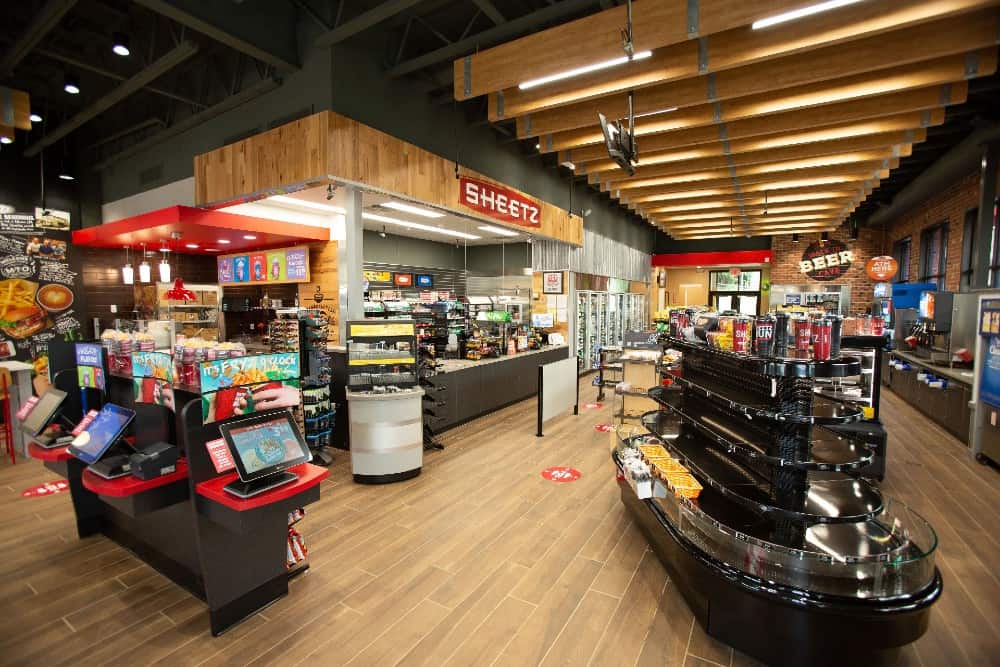
Sheetz Launches Cryptocurrency Payment Options Across 750 Stores
Convenience store chain Sheetz is collaborating with digital payments company Flexa, enabling customers to use cryptocurrency for in-store purchases at all of its U.S. locations This development follows a successful pilot program. Cryptocurrency as become more prominent in convenience stores. According to Grand View research, the worldwide cryptocurrency’s compound annual growth rate is projected to expand by 63.4% through 2030.
Sheetz EVP of Marketing and Supply Chain, Ryan Sheetz, stated, “We’ve always been committed to giving our customers more payment options, and our expanded partnership with Flexa allows us to do just that. We’re excited to make digital currency payments available at all our stores and to meet the growing interest in stablecoins among our customers.”
Flexa’s payment technology integrates directly with Sheetz’s in-store POS systems, allowing customers to make instant, fraud-proof transactions using a range of cryptocurrencies, including bitcoin, litecoin, ether, and stablecoins like USD Coin. To promote the launch, Sheetz and Flexa are offering a limited-time promotion whereby customers can save $20 on a single purchase made with Flexa.
Starbucks Unveils Quarterly Results as CEO Reveals Vision for Comeback to Increase Brand Loyalty and Connection
Newly appointed Starbucks CEO Brian Niccol, who formerly was head of Chipotle, is making sweeping changes to bring back a “human touch” to the Starbucks experience. One symbolic step involves returning Sharpies to baristas so they can personalize customer orders as they once did, a small but deliberate shift to reconnect with customers. This granular approach reflects Niccol’s commitment to tackling the broader issues at Starbucks, from high pricing and confusing customization options to outdated store design. These changes are part of a “Back to Starbucks” strategy aimed at rekindling the brand’s former prestige and strengthening customer loyalty in an era where Starbucks has struggled to balance innovation with operational simplicity.
Starbucks is also facing financial challenges, according to a recent earnings call by Nichols. Preliminary fiscal fourth-quarter results showed that same-store U.S. and North American sales are down by six percent. In addition, international same-store sales have declined by nine percent. Consolidated net revenues also declined by three percent to $9.1B. Meanwhile, the coffee chain experienced a 10% dip in customer traffic. Another concerning sign for Starbucks, according to the company’s Chief Financial Officer, Rachel Ruggeri, is that traffic in all channels is down, particularly in the afternoon. Visits are also down from non-Starbucks Rewards customers. While rewards memberships grew 4% year-over-year, the growth has plateaued.
The company’s recent focus on discounts and promotions for rewards members failed to drive lasting engagement, diluting the brand’s value. To address this, Starbucks plans to simplify pricing by reducing upcharges, reduce new store openings and focus on the store’s redesign, and focus on a four-minute order fulfillment goal across all channels, supported by improved staffing.
Yum! Brands Drives Growth With Voice AI and Digital Innovation in Q3
Yum! Brands, which owns subsidiaries Taco Bell, KFC, and Pizza Hut, among others, highlighted its expanding digital strategy during a third-quarter conference call and while speaking about Taco Bell’s successful adoption of voice AI in drive-thrus as a key example. More than two million voice AI orders have been processed across more than 300 Taco Bell locations, making the brand the largest quick-service restaurant (QSR) voice AI operator, according to Taco Bell Chief Financial Officer Chris Turner.
Turner said, “Drive-thru voice AI continues to scale across our network, with many franchisees eager to test this new innovation. To date, we have processed over 2 million successful orders with the system now in place in over 300 Taco Bell U.S. stores, making Taco Bell the largest QSR voice AI brand in the world.” Turner added, “For loyalty, Taco Bell is using its connected ecosystem to allow loyalty consumers to identify themselves at the drive-thru and kiosk, enabling personalization of their ordering experience and earning and redeeming of loyalty rewards. This was rolled out to 160 stores in Q3, and we’re encouraged with early results, which clearly show an increase in sign-ups and in daily loyalty transactions, all without an impact to speed of service.”
Yum! Brands’ digital strategy involves a two-phase approach to leverage proprietary platforms and data for cost efficiencies, innovation, and AI applications. Key elements of this strategy include the company’s Poseidon point-of-sale system, the Yum Commerce Platform, its Dragontail acquisition, the SuperApp for back-of-house management, and a Global Data Hub. CEO David Gibbs noted that these capabilities position the brand to meet consumers’ rising expectations for seamless digital interactions. Digital sales have risen by 30% year-over-year, contributing more than $8 billion and surpassing a 50% digital mix. According to Gibbs, the AI factory within Yum! Brands’ ecosystem utilizes vast data from the Poseidon POS, digital menu boards, and the company’s loyalty program to enhance connections to consumers.
